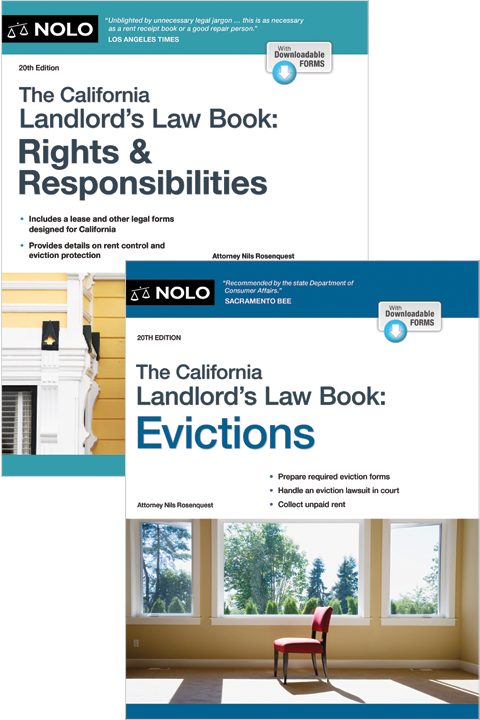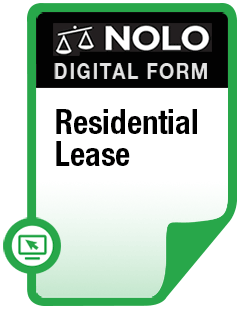Understand the basics of depreciating long-term assets such as buildings.
Long-term property is property that lasts more than one year--for example, buildings, tangible personal property like stoves and refrigerators, office or construction equipment, cars, and other vehicles. In tax parlance, such long-term property is called a capital asset because it is part of your capital investment in your rental business or investment activity.
Items you buy that are for, or related to, your rental activity that are not long-term property (such as the food you eat when traveling for your rental activity, fertilizer you use for your rental property landscaping, and chlorine you buy to clean an apartment complex swimming pool) can be fully deducted in the year in which you purchase them as operating expenses.
However, some types of long-term property that you buy for your rental activity must be deducted over much longer than a year. For example, rental buildings must be deducted a little at a time over many years through a process called depreciation. (Learn about more tax deductions to rental property.) Other forms of long-term property--a lawnmower, for example--can often be deducted in a single year.
Deducting Rental Buildings' Depreciation
For most landlords, their most valuable asset is their rental building or buildings. Rental buildings are real property that must be depreciated over many years. You can depreciate any type of structure you use for your rental activity—apartment buildings, houses, duplexes, condominiums, mobile homes, swimming pools, parking lots, parking garages, tennis courts, clubhouses, and other facilities for your tenants. You can also depreciate structures that you own and use for your rental activity even though they are not used by your tenants—for example, a building you use as your rental office, or a storage shed where you keep maintenance equipment. The cost of landscaping for rental property can also be depreciated.
Buildings are made up of various structural components that are assembled together, including walls, floors, ceilings, windows, doors, plumbing fixtures (such as sinks and bathtubs), pipes, ducts, bathroom fixtures, stairs, fire escapes, electrical wiring, lighting fixtures, chimneys, air conditioning and heating systems, and other parts that form the structure. These structural components are all part of the building for depreciation purposes.
The land on which a building sits is not depreciable—it's not part of the building for depreciation purposes.
You depreciate a residential rental building's basis--usually its cost, not counting the cost of the land--over 27.5 years. You must use the straight-line depreciation method, which is the simplest—though the slowest—depreciation method. You deduct an equal amount of the property's basis each year, except for the first and last years. Thus, if your rental building is residential property, you deduct 1/27 of its depreciable basis each year.
Additions and improvements to a building must also be depreciated. You do this separately from the original building itself. However, building components that cost less than $2,500 can be deducted in one year using the de minimis safe harbor (see below).
Deducting Land Improvements Bonus Depreciation
Land improvements include (1) grading, clearing, excavations, and landscaping, and (2) changes or additions to permanent structures on the land other than buildings--for example, fences, outdoor lighting, swimming pools, driveways, sidewalks, sprinkler systems, and drainage facilities. You may deduct the cost of land improvement using regular or bonus depreciation, and, in some cases, the de minimis safe harbor.
Bonus depreciation may be used to deduct land improvements that have a 15-year recovery period. During 2018 through 2025, 100% of the cost of these land improvements can be deducted in one year using bonus depreciation. Bonus depreciation is optional. Land improvements can always be depreciated using regular depreciation over 15 years. The de minimis safe harbor can also be used to deduct in one-year tangible property items that cost $2,500 or less--for example, you could deduct a plant that cost $2,000.
Deducting Personal Property
You can also deduct the cost of tangible personal property that lasts for more than one year that you use in your rental activity. This includes property inside a rental unit, such as stoves, refrigerators, furniture, and carpets. It also includes other personal property that you use in connection with your rental activity not located on your rental property—for example, a computer, cell phone, lawnmower, or automobile you use to conduct your rental activity.
Personal property can be deducted in a variety of ways.
Regular Depreciation of Personal Property
You can always deduct the cost of personal property using regular depreciation. Virtually all of the personal property you use in your rental activity has a five or seven-year depreciation period. In addition, you can usually use accelerated depreciation when you depreciate personal property. This allows you to deduct more of the cost of the property in the first few years and less in later years.
However, most landlords prefer to deduct the full cost of personal property in one year using one of the methods described below. Regular depreciation is typically only used when one of these methods is not available--for example when personal property is purchased from a relative.
Bonus Depreciation of Personal Property
Bonus depreciation enables a landlord to deduct a substantial percentage of a long-term asset's cost in a single year, instead of depreciating the full cost over many years. During 2018 through 2022 the bonus depreciation percentage is 100%--in other words, the entire cost of an asset can be deducted in one year with bonus depreciation during these years. Starting in 2023, the bonus depreciation percentage will be reduced 20% per year; thus it will be 80% in 2023, 60% in 2024, 40% in 2025, and 20% in 2026. Bonus depreciation is scheduled to end in 2027.
You can use bonus depreciation to deduct any tangible property you acquire by purchase. The property may be used or new, but you must not have used it before acquiring it. Thus, you can't convert property you previously used for personal use to rental use and deduct the cost with bonus depreciation— for example, you can't place your former living room couch in a rental unit and claim bonus depreciation for it. Bonus depreciation may also be used to deduct depreciable land improvements such as swimming pools, sidewalks, fences, landscaping, hot tubs, and driveways.
Rules for Taking Bonus Depreciation:
- You can use bonus depreciation to deduct any tangible property you acquire by purchase.
- You can deduct personal property that is used or new, but you must not have used it before acquiring it. Thus, you can't convert property you previously used for personal use to rental use and deduct the cost with bonus depreciation.
- There are no dollar limits on the total bonus depreciation deduction you may take each year. You may take your full deduction even if it exceeds your income for the year resulting in a net operating loss.
- You can apply bonus depreciation for an asset you use only part of the time in your rental activity. However, you must use listed property (primarily cars and light trucks) over 50% of the time.
Bonus depreciation is optional—you don't have to take it if you don't want to. However, it applies automatically unless you elect to opt-out. You can elect not to take the deduction by attaching a note to your tax return.
De Minimis Safe Harbor
Landlords may use the de minimis safe harbor to currently deduct the cost of property items that cost up to $2,500 apiece. The de minimis safe harbor is most often used to deduct the cost of tangible personal property items you use in your rental business. Components acquired to repair or improve tangible property may also be deducted under the de minimis safe harbor if within the $2,500 limit. This can include building components like a garage door or bathroom sink.
To take advantage of the de minimis safe harbor, you must file an election with your tax return each year. You must also treat amounts deducted with the safe harbor as currently deductible expenses on your books and records.
Section 179 Deductions
Section 179 of the tax code is similar to bonus depreciation in that it allows you to deduct in one year the entire cost of personal property you use in your business. This is called first-year expensing or Section 179 expensing. Section 179 may be used to deduct much the same property as bonus depreciation. However, bonus depreciation is usually a better choice than the Section 179 deduction because Section 179 is subject to several severe restrictions that don't apply to bonus depreciation. For example:
- you can't use Section 179 to deduct more in one year than your net taxable business income for the year
- you may only use Section 179 for property you use over 50% of the time for business (this isn't the case with bonus depreciation, except for listed property—primarily cars and light trucks)
- section 179 can only be used if your rental activities qualify as a business for tax purposes (bonus depreciation may be used for either business or investment activities)
- there is an annual limit on the amount of property that can be deducted with Section 179--for 2019, the limit is $1,020,000; the dollar limit is phased out if the amount of qualifying property you place into service during the year exceeds $2,550,000.
For more on deducting long-term assets, see Current vs. Capital Expenses.
Deducting the cost of personal and real property used in rental activities is a great deal for landlords, so it's crucial that you understand how to calculate and take these deductions. See Every Landlord's Tax Deduction Guide for more on the regular and bonus depreciation, the de minimis safe harbor, as well as Section 179 expensing.
Talk to a Lawyer
Need a lawyer? Start here.
How it Works
- Briefly tell us about your case
- Provide your contact information
- Choose attorneys to contact you
- Briefly tell us about your case
- Provide your contact information
- Choose attorneys to contact you



